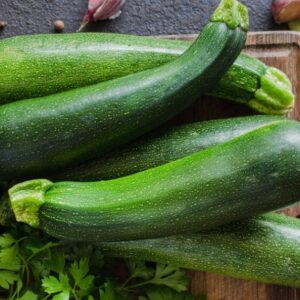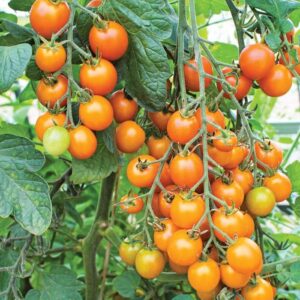black beauty variety of Aubergine berenjena
Description of black beauty variety of Aubergine berenjena
The Black Beauty variety of eggplant, or aubergine berenjena, is known for its glossy, dark purple skin and firm, creamy flesh. It’s a popular choice in many cuisines, prized for its versatile flavor and texture. When cooked, it tends to develop a rich, almost smoky flavor, making it ideal for grilling, roasting, or stewing.
Planting instructions for black beauty variety of Aubergine berenjena.
To plant Black Beauty eggplant, follow these general instructions:
- Choose the Right Location: Select a spot in your garden that receives full sunlight for at least 6-8 hours a day. Eggplants thrive in warm, well-drained soil.
- Prepare the Soil:** Before planting, amend the soil with compost or well-rotted manure to improve its fertility and drainage. Aim for a slightly acidic soil pH of around 6.0-6.8.
- Start Seeds Indoors (Optional): Eggplants can be started indoors 6-8 weeks before the last expected frost date in your area. Plant seeds in seed trays or small pots filled with seed starting mix. Keep the soil consistently moist and maintain temperatures around 70-80°F (21-27°C).
- Transplant Seedlings: Once seedlings have developed several true leaves and the danger of frost has passed, transplant them outdoors. Space plants about 18-24 inches apart in rows or in raised beds.
- Direct Planting (Optional): In warmer climates, you can also directly sow seeds outdoors after the soil has warmed to at least 70°F (21°C).
- Watering: Keep the soil consistently moist but not waterlogged. Eggplants prefer regular, deep watering to encourage healthy root development and fruit production.
- Fertilization: Fertilize the plants with a balanced fertilizer or one specifically formulated for vegetables, following the package instructions. Side-dress with compost or aged manure throughout the growing season.
- Support: Depending on the variety, eggplants may benefit from staking or caging to support their heavy fruit. Provide support to prevent the plants from toppling over as they mature.
- Mulching: Apply a layer of organic mulch, such as straw or shredded leaves, around the base of the plants to conserve moisture, suppress weeds, and regulate soil temperature.
- Pest and Disease Control: Monitor plants regularly for signs of pests (such as aphids, flea beetles, or tomato hornworms) and diseases (such as fungal infections or bacterial wilt). Use organic pest control methods when possible, such as hand-picking pests or spraying with insecticidal soap.
- Harvesting: Most varieties of Black Beauty eggplant are ready to harvest 70-85 days after planting. Harvest the fruits when they are glossy and firm, using pruning shears or a sharp knife to cut the stems. Avoid letting the fruits become overripe, as they may develop a bitter taste.
Description of black beauty variety of Aubergine berenjena
The Black Beauty variety of eggplant, or aubergine berenjena, is known for its glossy, dark purple skin and firm, creamy flesh. It’s a popular choice in many cuisines, prized for its versatile flavor and texture. When cooked, it tends to develop a rich, almost smoky flavor, making it ideal for grilling, roasting, or stewing.
Planting instructions for black beauty variety of Aubergine berenjena.
To plant Black Beauty eggplant, follow these general instructions:
- Choose the Right Location: Select a spot in your garden that receives full sunlight for at least 6-8 hours a day. Eggplants thrive in warm, well-drained soil.
- Prepare the Soil:** Before planting, amend the soil with compost or well-rotted manure to improve its fertility and drainage. Aim for a slightly acidic soil pH of around 6.0-6.8.
- Start Seeds Indoors (Optional): Eggplants can be started indoors 6-8 weeks before the last expected frost date in your area. Plant seeds in seed trays or small pots filled with seed starting mix. Keep the soil consistently moist and maintain temperatures around 70-80°F (21-27°C).
- Transplant Seedlings: Once seedlings have developed several true leaves and the danger of frost has passed, transplant them outdoors. Space plants about 18-24 inches apart in rows or in raised beds.
- Direct Planting (Optional): In warmer climates, you can also directly sow seeds outdoors after the soil has warmed to at least 70°F (21°C).
- Watering: Keep the soil consistently moist but not waterlogged. Eggplants prefer regular, deep watering to encourage healthy root development and fruit production.
- Fertilization: Fertilize the plants with a balanced fertilizer or one specifically formulated for vegetables, following the package instructions. Side-dress with compost or aged manure throughout the growing season.
- Support: Depending on the variety, eggplants may benefit from staking or caging to support their heavy fruit. Provide support to prevent the plants from toppling over as they mature.
- Mulching: Apply a layer of organic mulch, such as straw or shredded leaves, around the base of the plants to conserve moisture, suppress weeds, and regulate soil temperature.
- Pest and Disease Control: Monitor plants regularly for signs of pests (such as aphids, flea beetles, or tomato hornworms) and diseases (such as fungal infections or bacterial wilt). Use organic pest control methods when possible, such as hand-picking pests or spraying with insecticidal soap.
- Harvesting: Most varieties of Black Beauty eggplant are ready to harvest 70-85 days after planting. Harvest the fruits when they are glossy and firm, using pruning shears or a sharp knife to cut the stems. Avoid letting the fruits become overripe, as they may develop a bitter taste.





